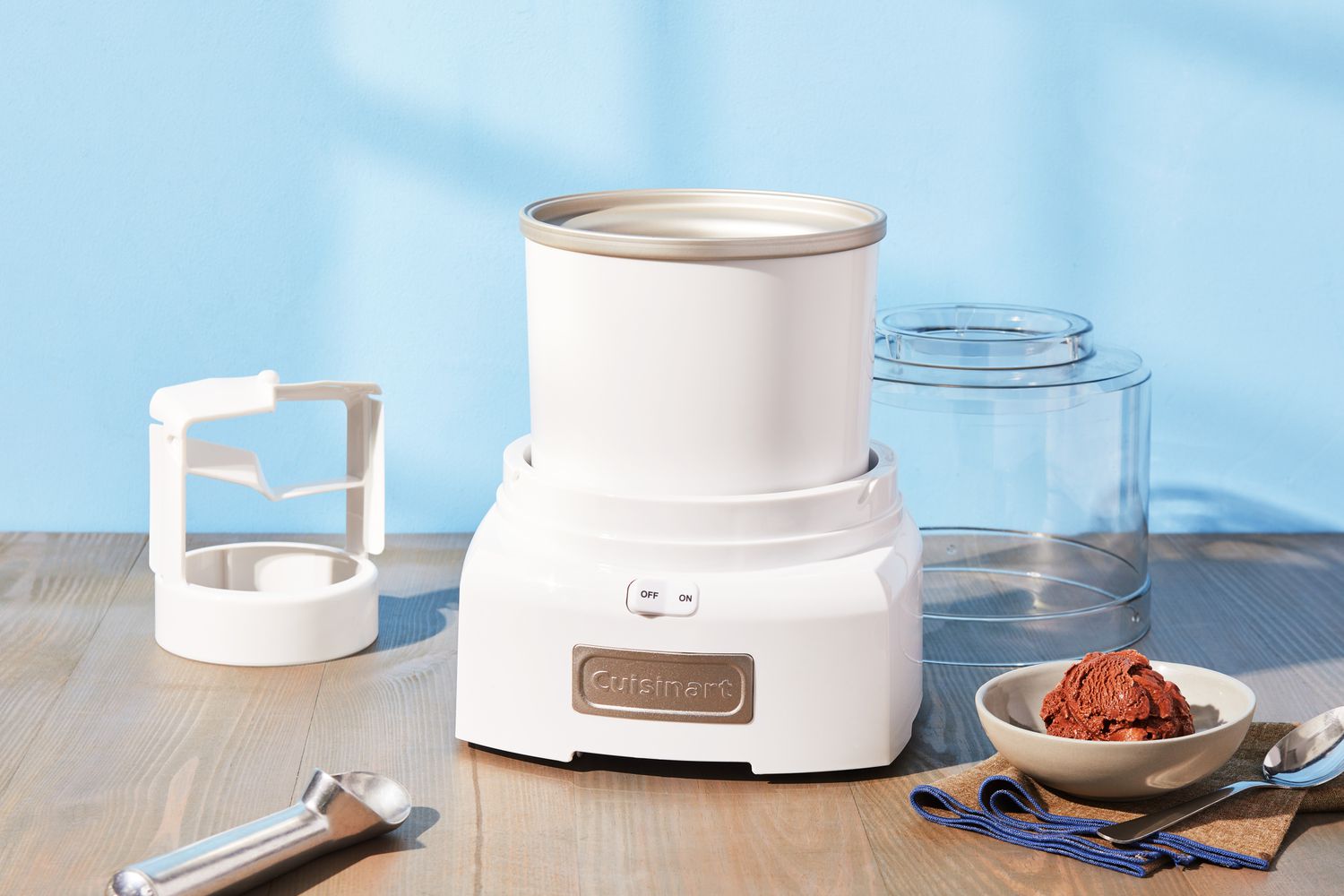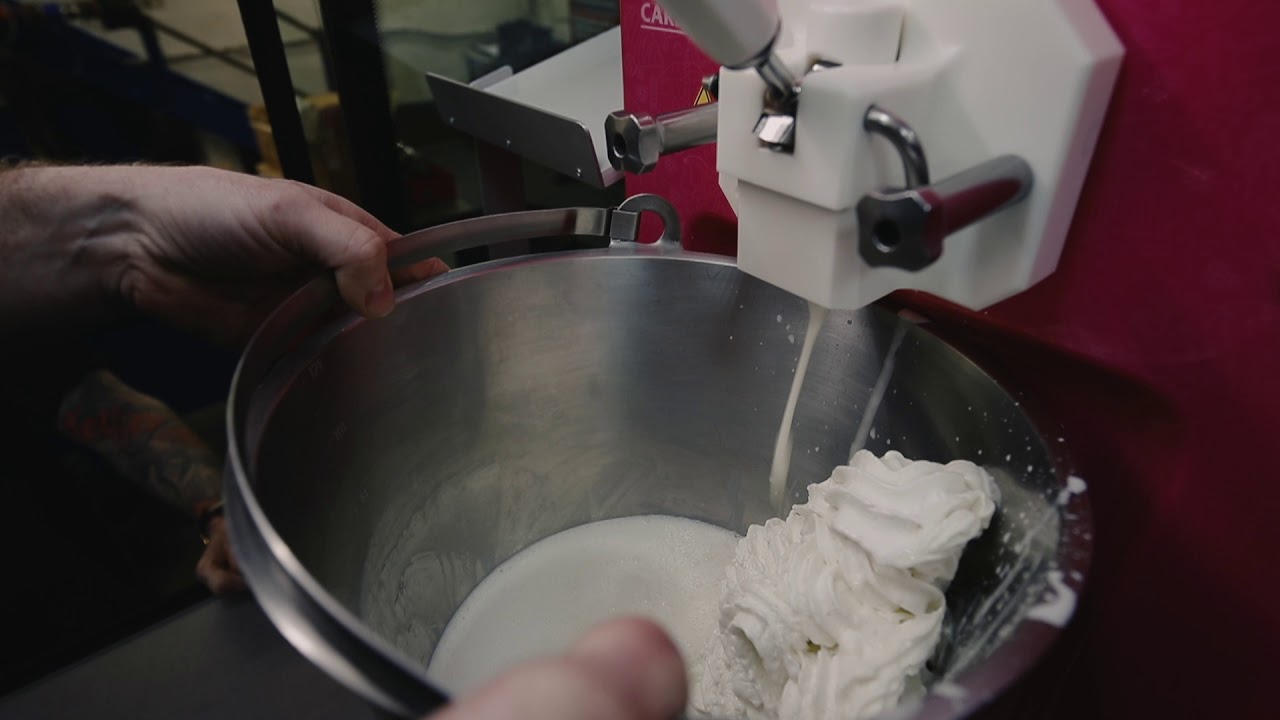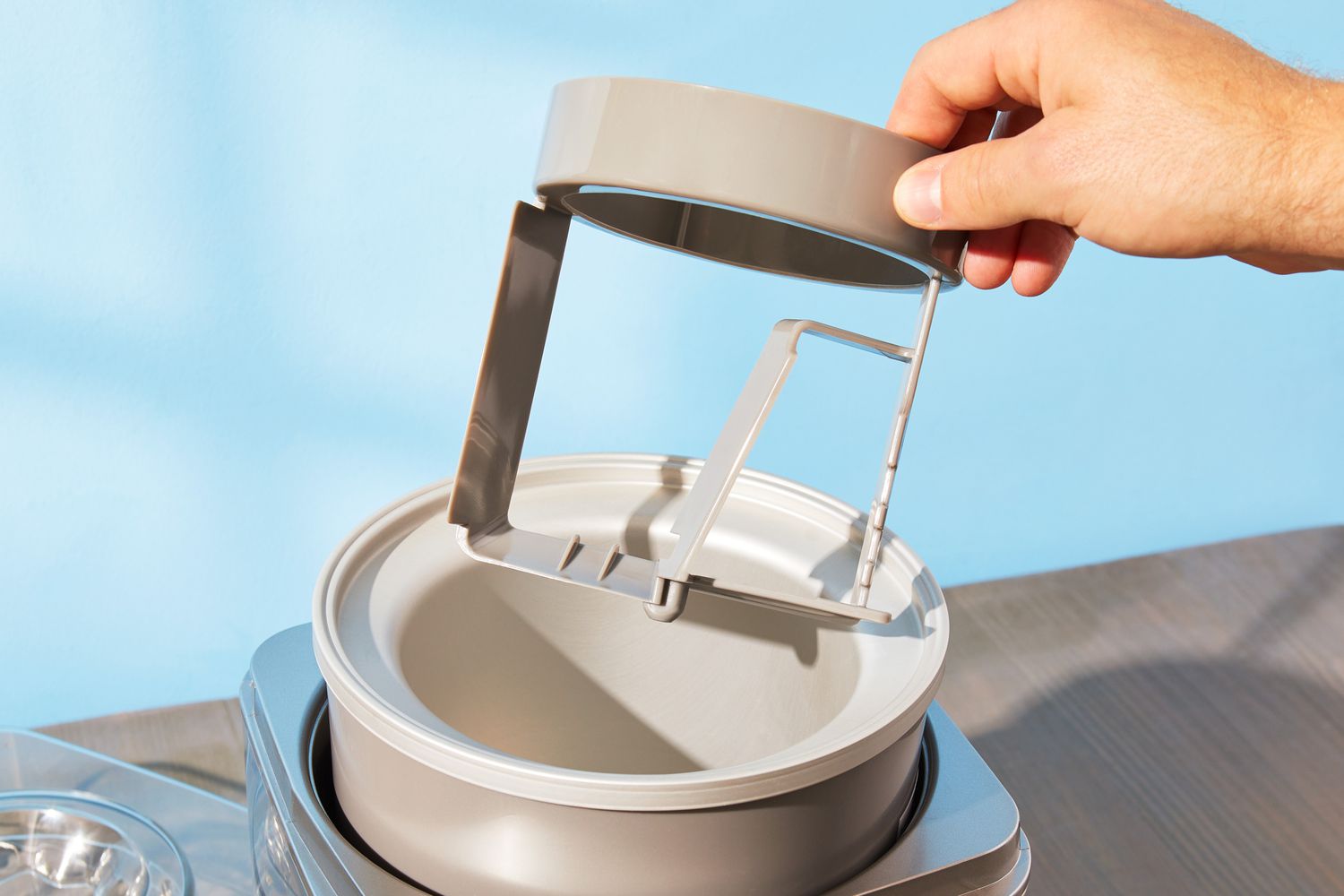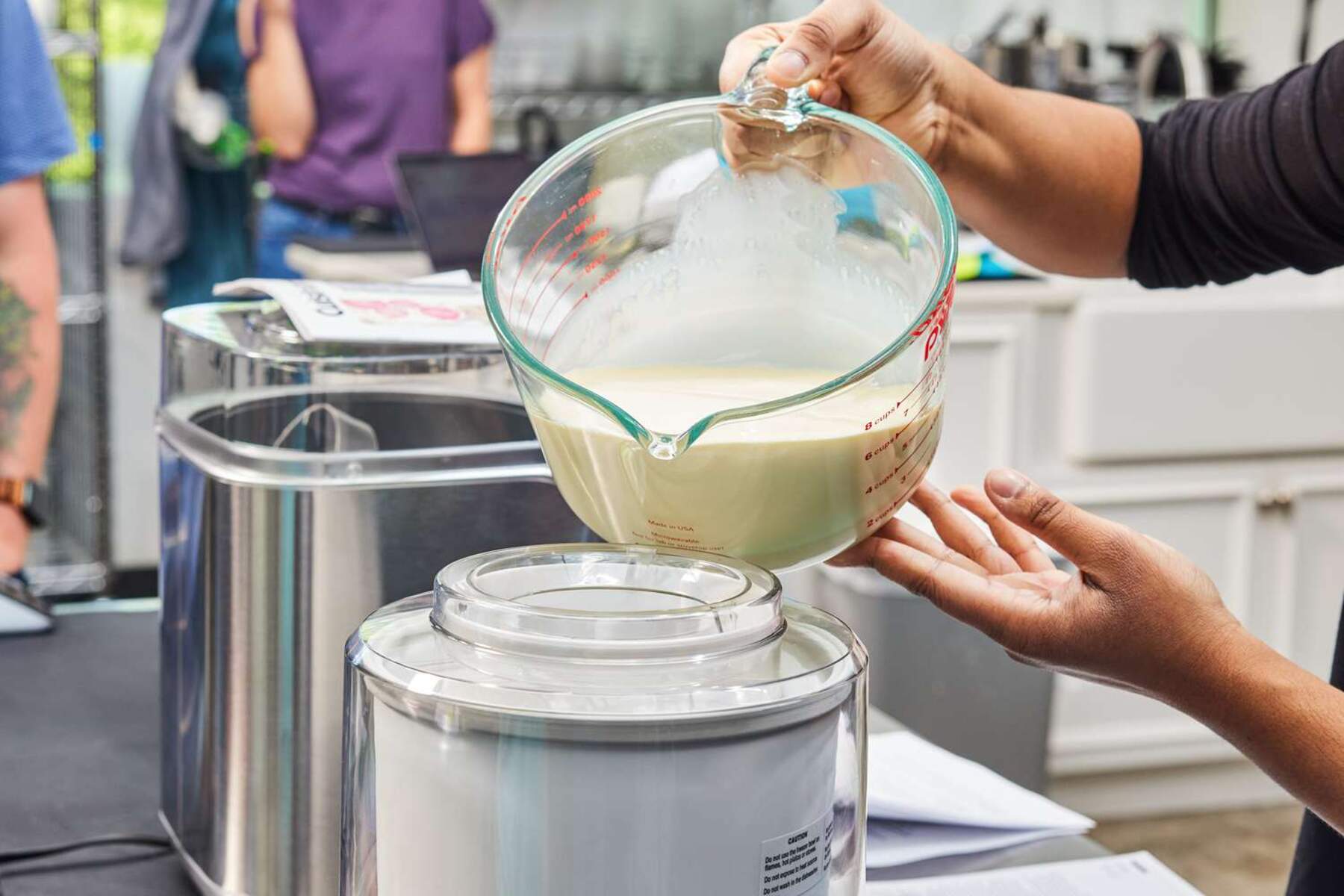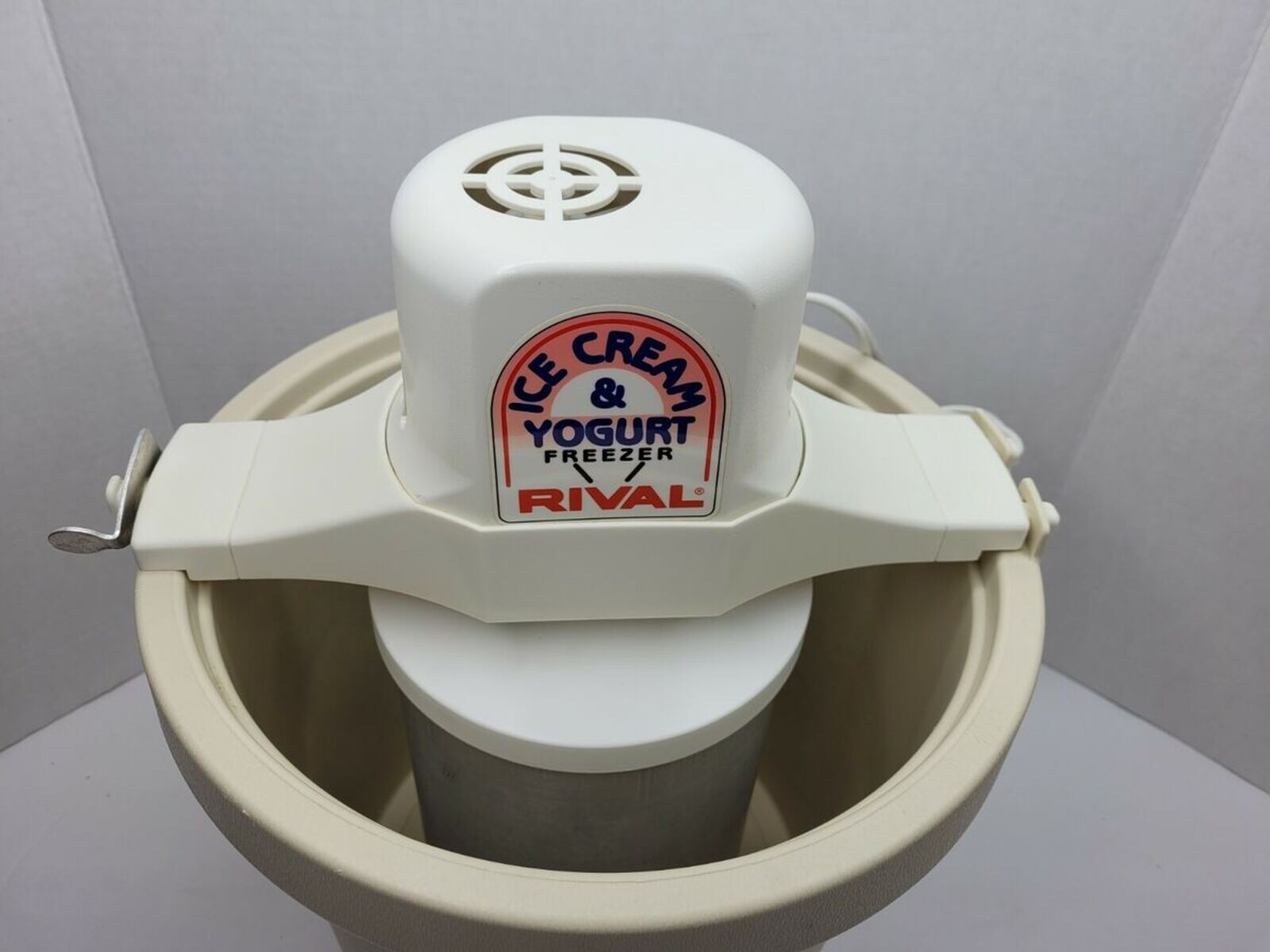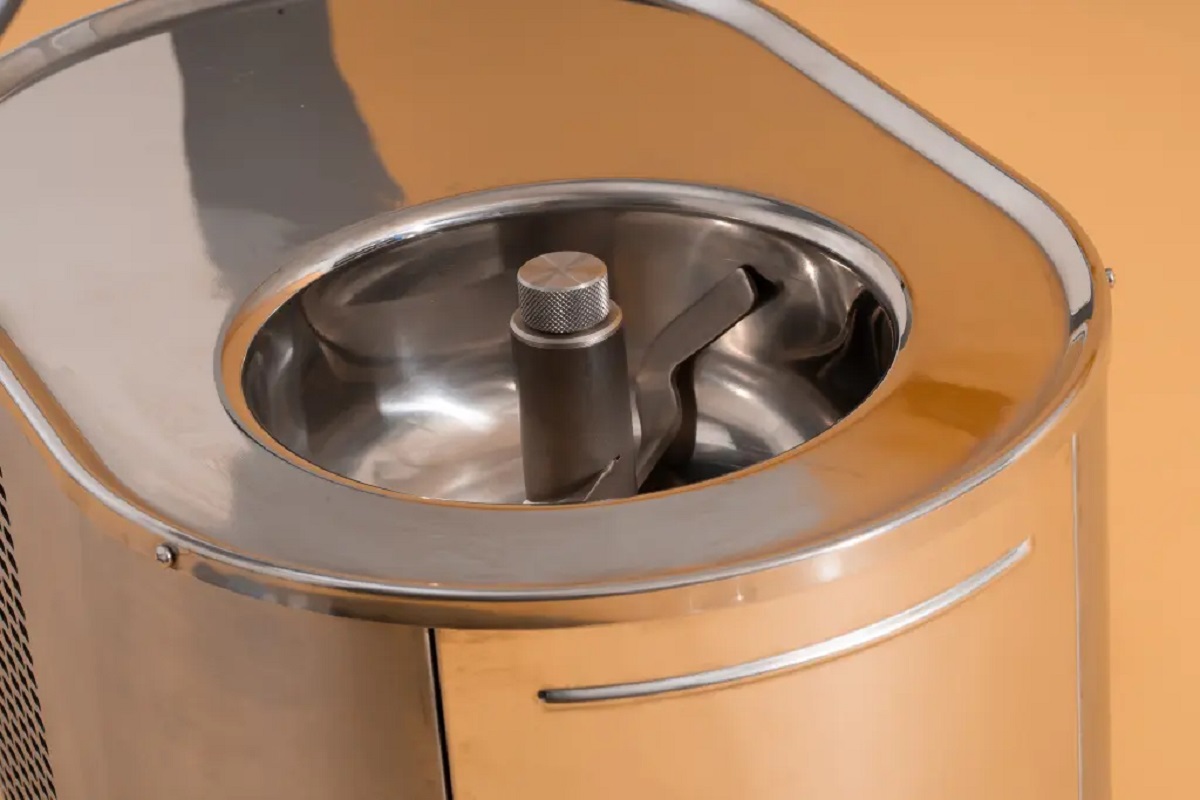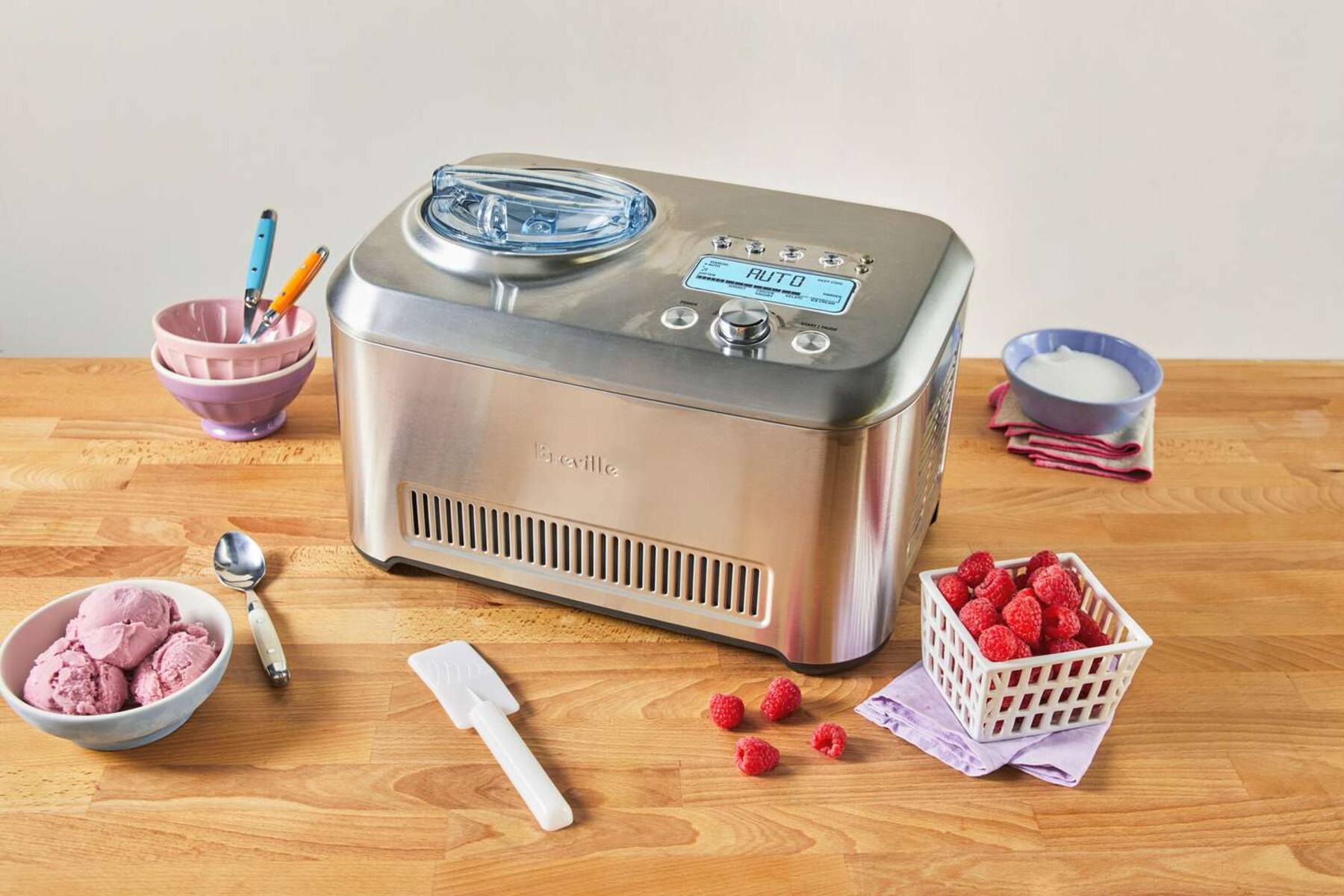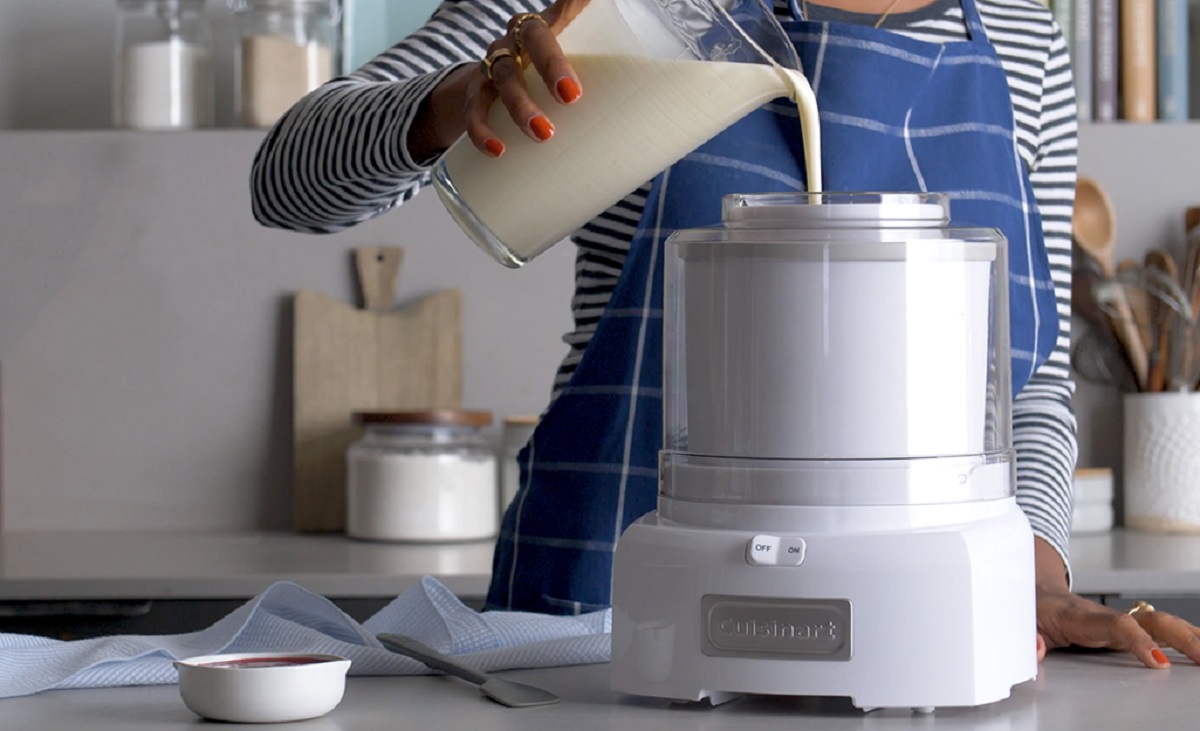Introduction
Ice cream is a beloved treat enjoyed by people of all ages. The smooth, creamy texture and delightful flavors make it irresistible, especially on a hot summer day. But have you ever wondered about the science behind making ice cream? What makes an ice cream maker work? In this article, we will delve into the chemicals that play a crucial role in the ice cream making process.
An ice cream maker is a device that churns and freezes a mixture of ingredients to create the delectable frozen dessert we all love. While the process may seem magical, it relies on a careful balance of various chemicals and ingredients to achieve the desired texture, flavor, and consistency.
In this article, we will explore the basic components of an ice cream maker and discuss the different chemicals used in the ice cream making process. From the common household ingredient of salt to specialized stabilizers and emulsifiers, each component contributes to the final product’s taste and appearance. Understanding these chemicals will provide a deeper appreciation for the complex science and artistry behind crafting the perfect scoop of ice cream.
So, join us on this flavorful journey as we uncover the secrets behind the chemicals that make an ice cream maker work. Let’s dive into the fascinating world of ice cream chemistry and discover the key ingredients that make this frozen delight possible!
The Basics of an Ice Cream Maker
An ice cream maker is a device designed to freeze and churn a mixture of ingredients to create smooth and creamy ice cream. While there are different types of ice cream makers available, they all operate on the same basic principles.
Firstly, the ice cream maker consists of a double-walled container. The inner container holds the ice cream mixture, while the outer container is filled with a combination of ice and salt. This setup creates a freezing environment necessary for the ice cream to solidify.
Secondly, the ice cream maker contains a paddle or dasher, which is powered by a motor or manual cranking mechanism. The paddle churns the mixture continuously, preventing the formation of ice crystals and ensuring a smooth consistency.
As the mixture is churned, the cold temperature created by the ice and salt causes it to freeze. This freezing process helps trap air bubbles in the mixture, giving the ice cream its light and airy texture.
The amount of time required for the ice cream to freeze and reach the desired consistency depends on the specific ice cream maker and recipe being used. Most ice cream makers come with a timer to assist in determining the optimal freezing time.
Once the ice cream has reached the desired consistency, it is ready to be enjoyed or transferred to a freezer for further hardening, depending on personal preference.
Ice cream makers offer a convenient way to create homemade ice cream, allowing you to customize flavors and experiment with different ingredients. Understanding the basics of how an ice cream maker works sets the foundation for exploring the essential chemicals that contribute to the ice cream making process.
Now that we have covered the basics of an ice cream maker, let’s dive deeper into the specific chemicals that are involved in creating this frozen delight.
Chemicals Used in Ice Cream Making
Ice cream making is a delicate science that relies on the precise combination of various chemicals to create the perfect texture, flavor, and stability. Let’s explore some of the key chemicals used in the ice cream making process:
- Salt: Salt plays a critical role in freezing the ice cream mixture. When salt is added to ice, it lowers the freezing point of water, allowing the surrounding temperature to drop even further. This enables the ice cream mixture to freeze and solidify faster.
- Ice: Ice is an essential ingredient in the ice cream making process as it provides the necessary cold environment to freeze the mixture. The ice, when combined with salt, forms an ice-cold bath that allows the mixture to freeze uniformly.
- Refrigerant: Some commercial ice cream makers use a refrigerant, such as liquid nitrogen or carbon dioxide, to rapidly freeze the mixture. These refrigerants provide extremely low temperatures, resulting in faster freezing and the formation of smaller ice crystals, which contributes to smoother ice cream.
- Emulsifiers: Emulsifiers are substances that help blend the fat and water molecules in the ice cream mixture. Common emulsifiers used in ice cream making include egg yolks or additives like lecithin. Emulsifiers create a stable emulsion that prevents the separation of fats and water, resulting in a smooth and creamy texture.
- Stabilizers: Stabilizers, such as guar gum or carrageenan, are added to the ice cream mixture to improve its texture and prevent ice crystals from forming. These ingredients help maintain the smoothness and prevent the ice cream from becoming too hard or icy over time.
- Flavorings and Colors: Ice cream would not be complete without the addition of flavorings and colors. Common flavorings include vanilla extract, cocoa powder, fruit puree, or even coffee. Food colorings may also be used to enhance the visual appeal of the ice cream.
By carefully balancing the right combination of these chemicals, ice cream makers create the perfect dessert with a creamy texture, rich flavors, and long-lasting stability.
Understanding the role of these chemicals in ice cream making provides insights into the complex processes involved. Now that we have explored the different chemicals used, let’s wrap up our discussion on the fascinating world of ice cream chemistry.
Salt
Salt is a crucial ingredient in the ice cream making process and plays a vital role in freezing the ice cream mixture. When salt is added to ice, it lowers the freezing point of water, allowing the surrounding temperature to drop even further.
When ice and salt are combined, they create an ice-cold bath that rapidly absorbs heat from the ice cream mixture. The lower freezing point of the saltwater mixture enables the mixture to freeze more efficiently and solidify faster. This process is known as freezing point depression.
As the ice cream mixture comes into contact with the cold surroundings created by the ice and salt mixture, the water molecules within the mixture begin to freeze. The salt lowers the melting point of the ice, allowing it to absorb heat from the mixture, which subsequently freezes the mixture.
Without salt, the ice alone would not be cold enough to freeze the mixture. The addition of salt ensures that the temperature drops below the freezing point of the ice cream mixture, allowing it to solidify into the desired creamy consistency.
The type of salt used in the ice cream making process is typically coarse rock salt or ice cream salt. These types of salt have larger grains, which dissolve slowly in the ice, creating a more consistent temperature throughout the ice cream maker.
It’s important to note that the salt does not directly contribute to the taste of the ice cream itself. Its role is purely to create the cold temperature necessary for the freezing process.
Controlling the right amount of salt is crucial to ensure proper freezing of the ice cream mixture. Too little salt may result in a longer freezing time and a softer consistency, while too much salt could cause the mixture to freeze too quickly, resulting in a grainy texture.
Now that we have explored the significance of salt in the ice cream making process, let’s move on to the next key component, ice.
Ice
Ice is a fundamental component of the ice cream making process, providing the necessary cold environment for the mixture to freeze. When combined with salt, ice forms a chilled bath that allows the ice cream mixture to solidify.
The ice used in the ice cream maker must be in small, crushed or shaved pieces rather than large chunks. This increases the surface area of the ice, allowing for better heat exchange. The larger the surface area, the more heat the ice can absorb, resulting in a faster freezing process.
When the salt is added to the ice, it causes the ice to melt slightly. This phenomenon occurs because the salt reduces the freezing point of the ice. As the ice melts, it absorbs heat from the surrounding environment, including the ice cream mixture, causing it to cool down and freeze.
It’s important to note that the ice itself does not directly freeze the ice cream mixture. Instead, it acts as a vehicle to transfer the cold temperatures necessary for freezing. The salt lowers the melting point of the ice, enabling it to absorb heat and create the freezing environment.
The ratio of ice to salt is crucial in achieving the right temperature for freezing the ice cream mixture. The amount of ice and salt needed may vary depending on the size and type of ice cream maker being used. It is important to follow the manufacturer’s instructions or recipe guidelines to ensure proper freezing.
Using crushed or shaved ice allows for better contact with the ice cream container, ensuring efficient heat transfer. This helps freeze the mixture consistently and prevents the formation of ice crystals, resulting in a smooth and creamy texture.
Throughout the process, it is important to monitor the ice level and ensure that it remains sufficient to maintain the freezing temperature. As the ice melts, additional ice may need to be added along with salt to maintain the desired temperature for freezing.
Now that we have explored the role of ice in the ice cream making process, let’s move on to the next essential component: refrigerant.
Refrigerant
In some commercial ice cream makers, a refrigerant is used to rapidly freeze the ice cream mixture. These refrigerants, such as liquid nitrogen or carbon dioxide, provide extremely low temperatures, resulting in faster freezing and the formation of smaller ice crystals, which contributes to a smoother texture.
Liquid nitrogen is an odorless and colorless substance that exists in a liquid state at extremely low temperatures, around -320°F (-196°C). When added to the ice cream mixture, it evaporates rapidly, absorbing heat and cooling the mixture quickly. The rapid freezing process prevents the formation of large ice crystals and results in a smooth and creamy consistency.
Similarly, carbon dioxide (CO2) can be used as a refrigerant in ice cream making. When pressurized and released into the ice cream mixture, the CO2 rapidly evaporates, creating a freezing effect. This process is often used in the production of soft-serve ice cream or for creating novelty frozen treats.
The use of a refrigerant offers several advantages in ice cream production. First and foremost, it allows for rapid freezing, reducing the time required to make ice cream. This is particularly beneficial in commercial settings where large quantities need to be produced quickly.
Additionally, the use of a refrigerant helps create a smoother texture by minimizing the formation of ice crystals. The smaller ice crystals result in a creamy and velvety mouthfeel, enhancing the overall quality of the ice cream.
It’s important to note that the use of refrigerants in ice cream making equipment requires specialized machinery and safety precautions. The handling and storage of liquid nitrogen or carbon dioxide must be done with care to ensure the safety of the operators and consumers.
Refrigerant-based ice cream making methods are commonly found in professional ice cream production facilities. However, they are less common in household ice cream makers, where salt and ice or electric freezers are typically used.
Now that we have explored the use of refrigerants in ice cream making, let’s move on to the next section, which examines the role of emulsifiers.
Emulsifiers
Emulsifiers play a crucial role in ice cream making by helping to blend the fat and water molecules in the mixture. They create a stable emulsion, preventing the separation of fats and water and resulting in a smooth and creamy texture.
One common emulsifier used in ice cream making is egg yolk. Egg yolks contain lecithin, a natural emulsifier that helps bind the fat and water components together. The proteins in the egg yolk help stabilize the emulsion, creating a creamy and stable texture in the final product.
In addition to egg yolks, commercial ice creams often use other emulsifiers, such as mono- and diglycerides or polysorbates. These emulsifiers are derived from natural sources or produced synthetically and have similar effects to egg yolks in creating a stable emulsion.
Emulsifiers work by reducing the surface tension between fat and water molecules. This allows the fat droplets to disperse evenly throughout the mixture, preventing them from clumping together and forming noticeable fat pockets or an unpleasant greasy texture.
By incorporating emulsifiers, the ice cream mixture undergoes a process called homogenization. This process breaks down the fat globules into smaller droplets, evenly distributing them throughout the mixture. The emulsifiers then form a protective layer around the fat droplets, preventing them from recombining during freezing and resulting in a smoother texture.
In addition to their emulsifying properties, some emulsifiers also improve the stability of the ice cream. They help prevent the formation of ice crystals during storage, keeping the ice cream softer and smoother for an extended period.
The quantity of emulsifier used in ice cream making varies depending on the recipe and desired texture. It is crucial to follow the recommended amounts to achieve the right balance and avoid an overly greasy or unstable ice cream texture.
Emulsifiers contribute significantly to the overall quality and mouthfeel of ice cream, ensuring a smooth, creamy, and uniform texture throughout. They play a vital role in maintaining the stability and consistency of the ice cream, providing a delightful sensory experience for ice cream enthusiasts.
Now that we have explored the importance of emulsifiers, let’s move on to the next section, which examines the role of stabilizers in ice cream making.
Stabilizers
Stabilizers are essential components in ice cream making that help improve the texture, prevent ice crystal formation, and extend the shelf life of the final product. These substances contribute to the overall stability and consistency of the ice cream.
Common stabilizers used in ice cream production include guar gum, carrageenan, locust bean gum, and xanthan gum, among others. These stabilizers are derived from natural sources and have excellent water-binding properties, which help maintain the smoothness and prevent the formation of ice crystals.
Stabilizers act by interacting with the water and other ingredients in the ice cream mixture to form a gel-like network. This network helps trap air bubbles and prevents them from escaping during the churning process. By retaining air in the mixture, stabilizers contribute to a lighter and creamier texture.
In addition to their ability to retain air, stabilizers also bind to water molecules, limiting their mobility. This reduces the growth of ice crystals and improves the overall texture of the ice cream, preventing it from becoming grainy or icy.
Stabilizers also play a role in preventing the melting of the ice cream during storage or when exposed to fluctuating temperatures. They help maintain the structure of the ice cream, keeping it smooth and slowing down the rate of melting.
The type and quantity of stabilizer used in ice cream making vary depending on the desired texture and the specific recipe. It is crucial to strike the right balance to achieve the optimal stability and consistency without negatively impacting the taste or mouthfeel of the ice cream.
Stabilizers are particularly useful in commercial ice cream production, where large volumes are made and the product needs to maintain its quality during transport and storage. However, they can also be used in homemade ice cream recipes to enhance stability and improve the overall experience.
With the addition of stabilizers, ice cream becomes not only more visually appealing but also maintains a consistent texture and quality throughout its shelf life.
Now that we have explored the importance of stabilizers in ice cream making, let’s move on to the final section, which examines the role of flavorings and colors.
Flavorings and Colors
Flavorings and colors are the delightful components that give ice cream its tantalizing taste and vibrant appearance. They are the finishing touches that elevate the sensory experience of enjoying this frozen delight.
One of the most popular flavorings used in ice cream making is vanilla extract. Vanilla adds a classic, rich, and comforting taste that complements a variety of other flavors. Other natural flavorings, such as fruits, nuts, chocolates, or coffee, can also be used to create a wide range of delicious ice cream flavors.
Artificial flavorings are sometimes employed to achieve more unique or unconventional flavors. These flavorings come in various forms, including liquids, powders, or pastes, and can provide intense and consistent flavor profiles.
Colors are often used to enhance the visual appeal of ice cream. Natural colorings, such as fruit juices or vegetable extracts, can be used to create vibrant hues without sacrificing the health-conscious aspect of the treat. Artificial food colorings may also be used to achieve more vibrant and eye-catching colors.
When adding flavorings and colors to ice cream mixtures, it is vital to consider the balance and intensity of the ingredients. Too little flavoring may result in a subtle taste that is hardly noticeable, while an excessive amount may overpower the other components of the ice cream.
It’s also important to note that adding additional liquid flavorings can impact the texture of the ice cream, as they can introduce more moisture. This could result in a softer or icier final product. Careful consideration should be given to the overall composition and balance of the ice cream mixture.
Flavorings and colors add a personal touch to ice cream, allowing for endless creativity and customization. Whether it’s a classic vanilla, a fruity sorbet, or a decadent chocolate, these enhancements make each scoop of ice cream a unique and flavorful experience.
Now that we have explored the role of flavorings and colors in ice cream making, let’s conclude our journey through the fascinating world of ice cream chemistry.
Conclusion
The process of making ice cream is a delightful blend of art and science, relying on a careful balance of various chemicals and ingredients to create the perfect frozen treat. From the common household ingredient of salt to specialized emulsifiers, stabilizers, and flavorings, each component contributes to the texture, stability, and flavor of ice cream.
An ice cream maker functions by freezing and churning the mixture, creating a creamy and smooth consistency. Salt, when combined with ice, lowers the freezing point and creates a cold environment for the mixture to solidify. Emulsifiers help blend the fat and water molecules, preventing separation and ensuring a creamy texture. Stabilizers improve the stability and prevent ice crystal formation, resulting in a smoother and longer-lasting ice cream.
Flavorings and colors allow for endless creativity, providing an array of delicious options to tantalize our taste buds and enhance the visual appeal of ice cream. From classic vanilla to exotic fruit flavors, ice cream becomes a canvas for culinary experimentation and personal preferences.
Understanding the role of these chemicals, as well as the basic components of an ice cream maker, gives us a greater appreciation for the craftsmanship and science behind this beloved frozen dessert. It opens our eyes to the wonders of ice cream chemistry and allows us to create homemade delights tailored to our own taste.
So, the next time you savor a scoop of ice cream, take a moment to appreciate the complex interactions of salt, ice, emulsifiers, stabilizers, and flavorings that come together to create this delectable treat. Whether you enjoy it on a hot summer day or as a comforting indulgence, know that the precision and creativity behind ice cream making have played a role in crafting this delightful frozen delight.
Now, armed with this knowledge, you can embark on your own ice cream-making adventures, experimenting with different combinations of chemicals and flavors to create the perfect scoop. Happy ice cream making!







